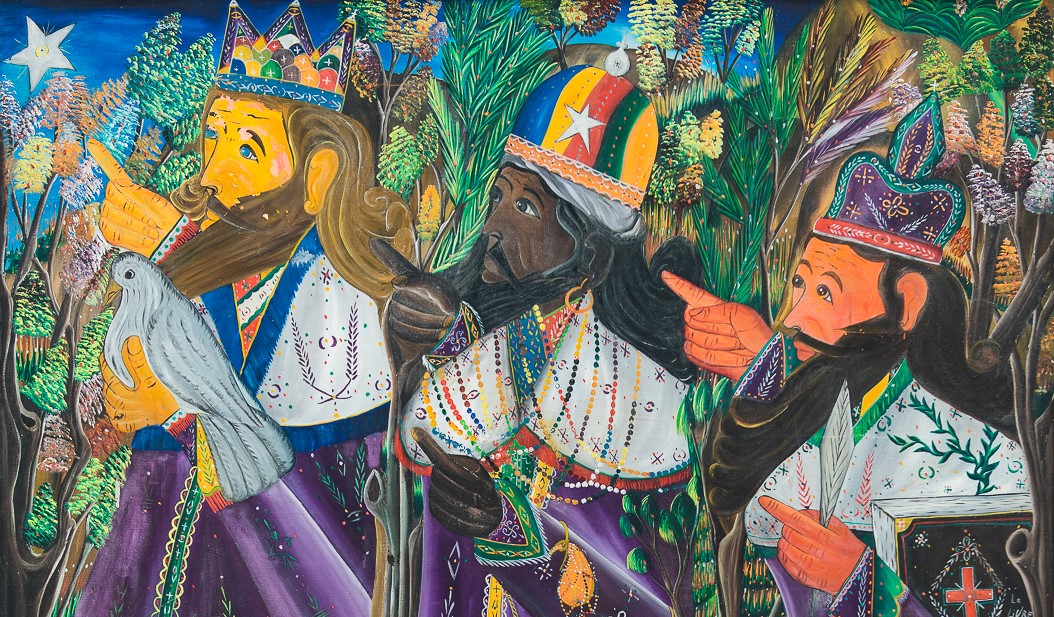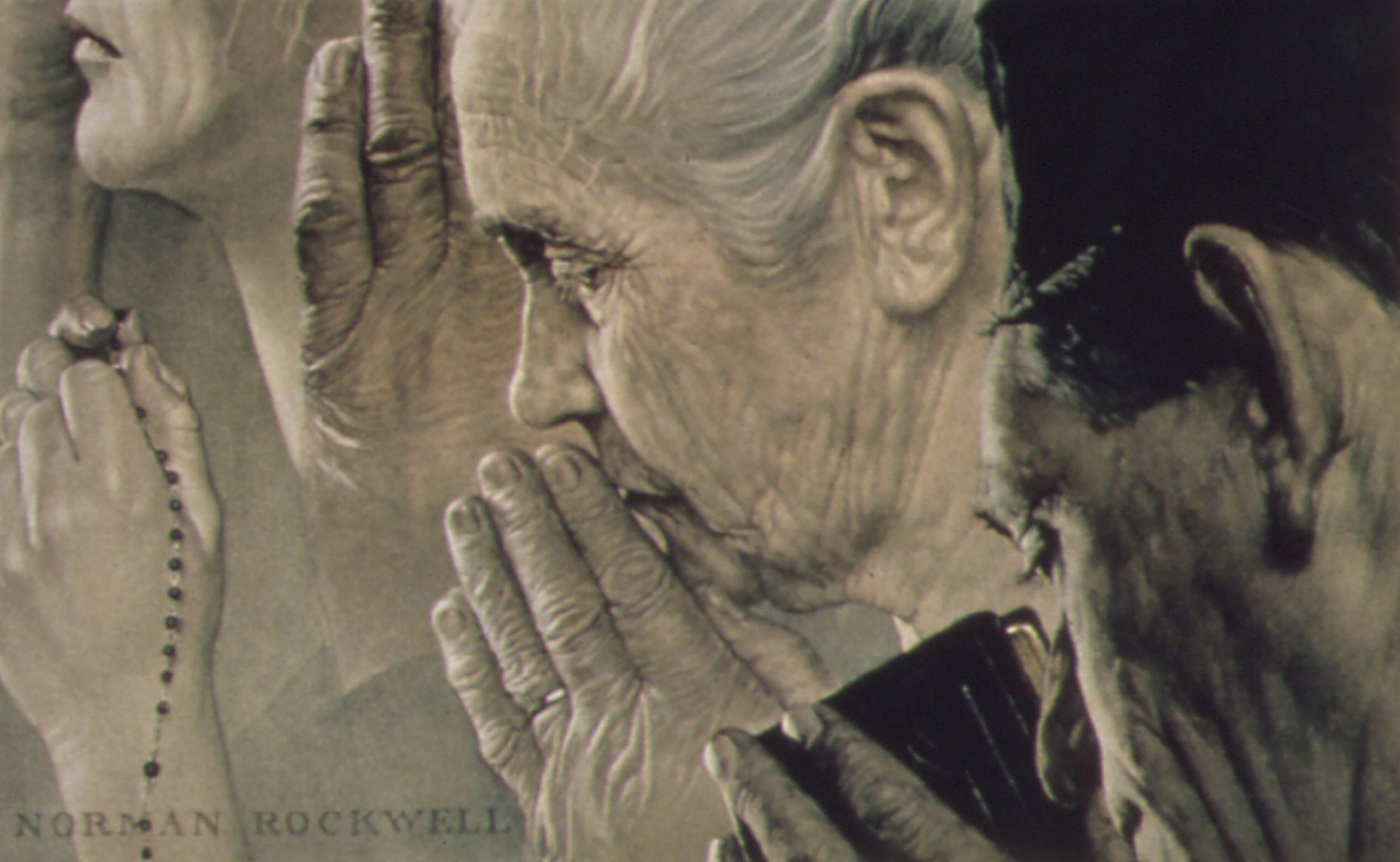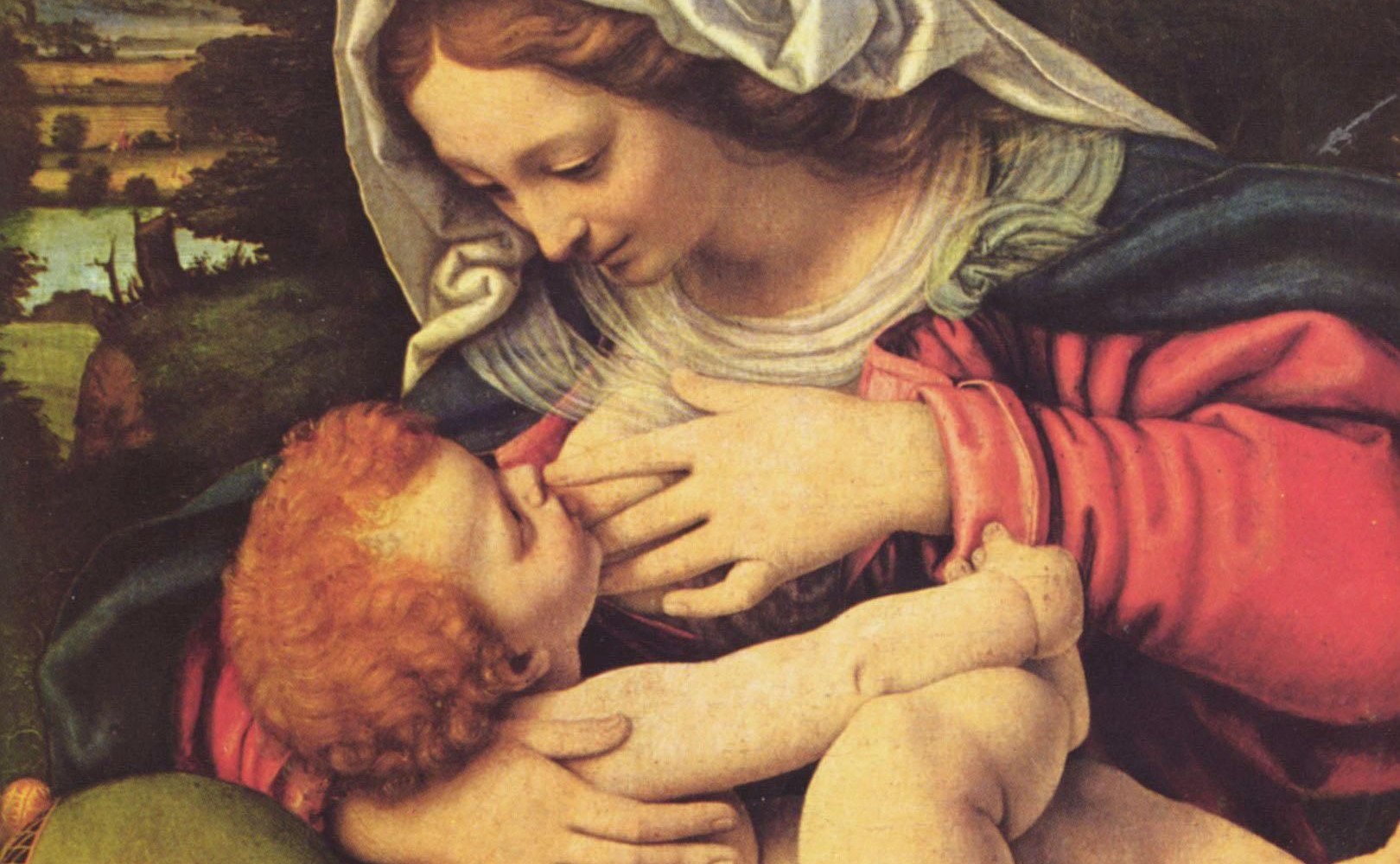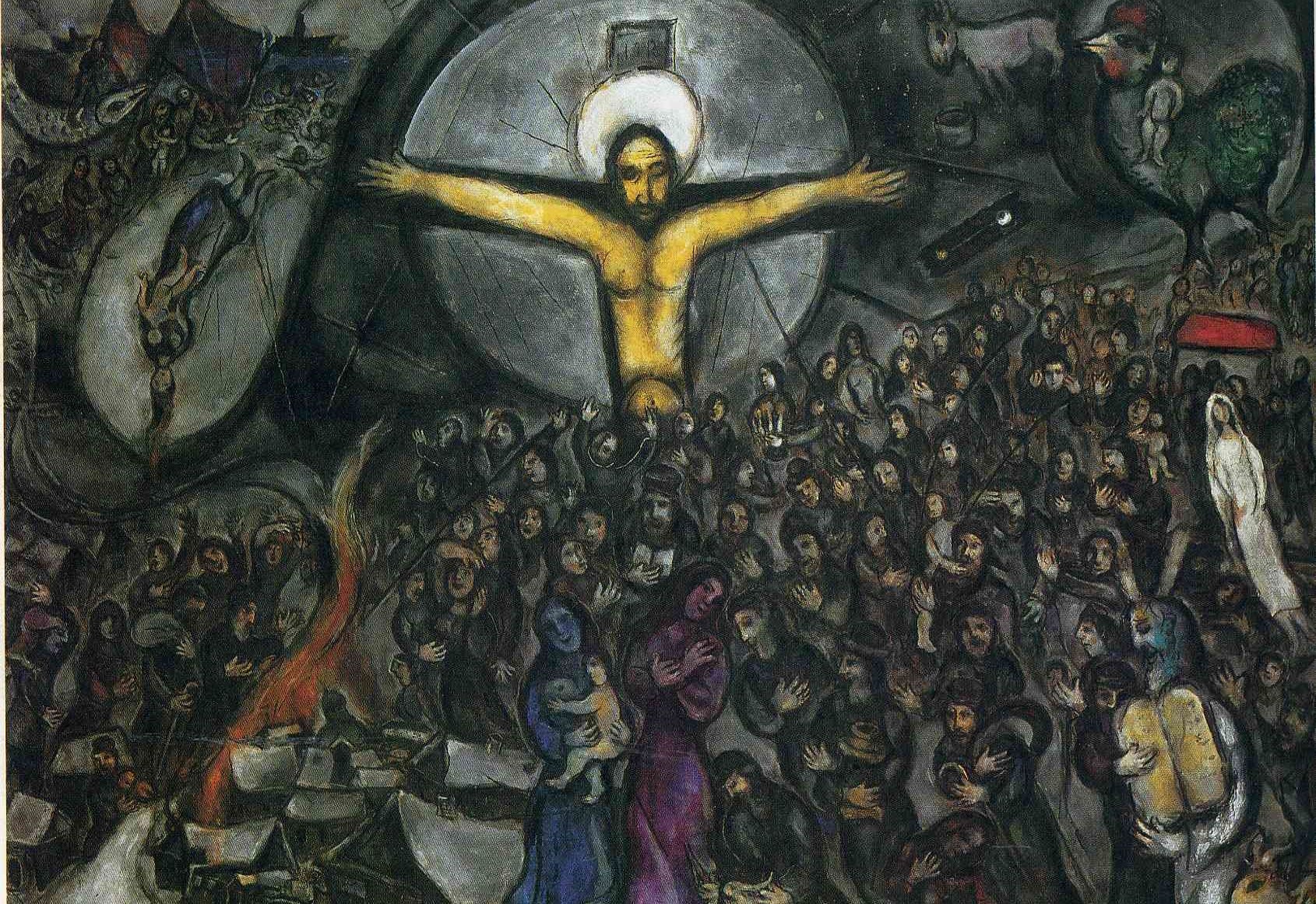History turned a corner with the birth of Jesus Christ, and while the written reports of that event don’t tell me everything I want to know, they do tell me everything I need. The Gospels occupy a kind of center point in human culture as a whole: products of a particular time and place, but comprehensible to all.
By now, the Three Kings are almost to Bethlehem, and the Christmas season is drawing to a close. But the Three Kings (actually, “wise men” according to Matthew’s gospel) aren’t just bringing their famous three gifts of gold, frankincense, and myrrh. They bring with them another set of questions that we have to wrestle with a bit if we are going to see Christmas clearly.
The story is pretty and the ideas are rich: But what actually happened in Bethlehem some 2,000 years ago? How much of the Christmas story is “real” and how much of both this story—and ultimately the entire record of the Scriptures—is historically accurate?
This is a much more complicated question than it may appear at first glance. Many Christians argued long before the rise of modern historical and scientific criticism of the holy books that much of the Bible was written to be interpreted symbolically rather than read as a historical or scientific account. Others have made the point that books like the Book of Jonah (in which, among other things, we find the famous story of Jonah and the whale) were widely accepted as “true” in the sense that the Narnia stories or The Lord of the Rings are true. Those 20th-century English literary classics tell real and valuable truths about our world, but there isn’t a lot of archaeological evidence to support the claim that elves once walked the earth. And there are other Biblical books—like the Song of Solomon, the Book of Ecclesiastes, and the Psalms—that are obviously literary rather than historical.
So the question of Biblical accuracy is complicated, and both believers and non-believers in the Bible’s religious message have reached a variety of different conclusions about the historical reliability of Scripture. But even for people—like me—whose personal experiences with God and Christ tell us that there must be something important behind all this noise and excitement, the question of how to make sense of the Biblical record is convoluted and thorny.
It’s not as easy for an infinitely transcendent God to reveal himself to culture-bound, historically placed people as you might think. When God committed Himself to humanity, He made the decision to enter history. He took us where He found us and met us where we stood. Even today, there are ways that our knowledge of the universe and of human history places sharp limits on what we can understand about God. The difference between our times and the era of Jesus often complicates our ability to make sense of the stories we are reading, or to understand what they meant to the original audiences who heard them.
After all, when the wise men get to Herod, they turn out to be astrologers. They have seen a star in the heavens that announced that a king of the Jews had been born, so they traveled to Jerusalem to find the child. In a sense, it was a journey of scientific discovery: If they found that such a child had been born, their interpretations would be confirmed. The science of astrology would take a step forward.
We know enough about the astrology of the period to have some idea what they were doing. With roots that have been traced back to ancient Mesopotamia long before the Jews got to Judea, astrology in some ways was humanity’s first science and it rested on a very complex set of observations and measurements. Charting the course of the sun, the moon, the stars, and the planets through the skies, ancient thinkers noticed that the movements of those bodies formed patterns. Furthermore, they saw that these patterns corresponded with regular events on earth. When the sun was in the region of the sky that matches the constellation Aries, the earth renewed itself after the winter cold and the crops once again began to grow. As the sun and the other planets and stars moved round the skies in their stately progressions, other cycles took place on earth. Birds migrated for the winter and returned in the spring. Sheep and camels migrated across the pasture lands; fish had their seasons for breeding, at times disappearing and at other times returning in great numbers.
In one of the great intuitive jumps—a great scientific discovery, actually, which is still the basis of much of our knowledge of the universe today—the ancient thinkers posited that those heavenly bodies acted at a distance. The sun not only warmed you when you looked at it; somehow the sun’s rays caused the seasonal changes taking place all around. The moon’s power somehow caused tides, and the tides were greater or less depending on the positions of the sun and the moon in their complex dance. Over the centuries, the sky scanners found that these observations had predictive power; by the time of Jesus’ birth, they were regularly predicting eclipses of the sun and the moon. Julius Caesar relied on this science to produce a calendar so accurate that, with Gregory’s tweak, it remains the basis on which the world organizes its affairs to this day.
Somewhat ironically, the ancient astrologers worked like many scientists today: That is, they built models and looked for correlations to establish cause and effect. If Jupiter turned retrograde (if the planet’s apparent motion in the sky changed direction) and a great king died, then astrologers would assume that Jupiter’s change of direction caused the king’s death. These models were always being tweaked, but with enough tweaking they still seemed to work. Even in classical times skeptics sniffed that “correlation isn’t causation” and denounced astrologers as quacks—their “models” never quite seemed to predict with precision.
Still, with so many demonstrable connections between the heavens and the earth, studying the heavens impressed many people as the best way to forecast future events. It was an approach so intuitively obvious and so intellectually compelling that down through all the recorded years of history, right into the Reagan White House, powerful women and men have sought the advice of qualified astrologers for insight into unfolding events.
As we noted in an earlier Yule post, there are a number of theories about what happened in the skies over Bethlehem, but it appears that a powerful astrological event occurred around the time scholars think Jesus was actually born; there are several independent accounts of astrologers predicting the birth of a major new ruler at about this time. When the wise men said they were “following a star” they had something very specific in mind.
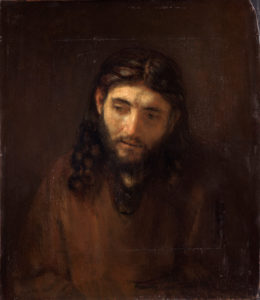
So what do we make of this? Is the Bible putting its seal of approval on the “science” of astrology, so that we must be either Christians and believers in astrology or scoffers at both the religion and the “science?” Do we, as some Christians do, think that rather than an astrological event, the Bible refers to a special cosmic miracle, a light set in the sky to mark this special occasion in the history of the world? Or does this all sound like a bunch of legends collected by ignorant and superstitious people a long time ago and far away?
All this gets us into deep theological waters where wiser and better educated writers than I have gotten into trouble. Yet, the issue is too important to ignore. It brings us to the questions that any serious person has to ask sooner or later when looking into these things: How true is all this? Are these historical narratives or beautiful myths? What are these ancient documents trying to tell us, and how far can we trust them?
My intellectual starting point for questions of this kind is to come back to the ideas we looked at earlier in this series: The question of a universal God who reveals Himself in a particular culture. Jesus was a Jew, shaped by Jewish customs, Jewish history, Jewish
theological ideas, and Jewish scholarship. And it was not only necessary that Jesus be born to a particular mother speaking a particular language and inheriting a particular culture; He also had to be born at a particular time.
And just as He was a man of his people, a Jew, He was a man of his time; the people around Him had no special access to scientific or archaeological knowledge other than what was generally known. And in a world without the Internet or printing, the people around Jesus would have likely been less well-informed on many important subjects than the cultivated, educated, and widely traveled Roman elite.
In Jesus’ time, modern ideas of science and scholarship did not exist. In an age without printing, libraries were rare. Greek and Roman historians, the best of their time, believed that it was appropriate for a historian to write speeches for historical characters based on the historians’ knowledge of character and their understanding of the events. The great speeches in Thucydides’ classic History of the Peloponnesian War weren’t copied from the speakers’ drafts or notes or even necessarily from interviews with those who heard the speech. A well-trained historian at this time wasn’t somebody who searched the written archives and other records and then wrote articles and books that carefully separated what was and was not known. A well-trained historian was somebody who, after careful study of the available information, was able to make intelligent deductions about what was missing, critique the obviously legendary and biased sources, and, on the basis of experience, intuition, and skill, was qualified to fill in the large gaps that the incomplete records of the day inevitably left.
When the author of Luke’s Gospel tells us at the beginning of his work that he made a systematic and orderly investigation of the events to give us the best information available, he could only mean that he was doing what a responsible and serious historian of his time understood as his duty, whether or not that would qualify him for tenure in a modern American history department. And in trying to make sense of the oral histories and evidence available to the historian of a persecuted movement widely scattered across the Levant, many of whose members would have been semiliterate at best, Luke had a more difficult job than his secular counterparts. But if Jesus was going to be born when and where He was, and was going to reach out to the poor and the marginalized, a writer like Luke was only kind of historian around for the job.
That makes it tough on contemporary readers who want to apply the standards we use in modern history and science to events that took place long ago and far away. When we read a historical document, we have a very clear standard of what we mean by whether the document is accurate. If the wise men had brought a video camera with them, what pictures of the Holy Family would they have uploaded to wisemen.com on the web?
We want answers to questions like this—and we can’t get them. Until and unless we build time machines, we must deal with the information that we have, collected by people whose ideas of historical verification and science were very different from ours.
I’m not sure that this matters as much as some people—Biblical ultra-literalists on the one hand and scoffing atheists on the other—think it does. Human beings almost never have the kind of knowledge and certainty that we want, but we press on nevertheless, making choices and commitments. From where I sit, it seems pretty certain that Something Big happened at the first Christmas and that history somehow turned on its hinges. As I see it, the old AD/BC division points to something important and real. History turned a corner with the birth of Jesus Christ, and while the written reports of that event don’t tell me everything I want to know, they do tell me everything I need.
Most Americans seem to share that view. As William Galston wrote in the Wall Street Journal, summarizing the results of a Pew poll on American attitudes toward religion and, specifically, the Christmas story, “73% of U.S. adults believe that Jesus was born to a virgin; 81%, that the baby Jesus was laid in a manger; 75%, that wise men guided by a star brought gifts of gold, frankincense and myrrh; and 74%, that an angel announced the birth of Jesus to shepherds. Fully 65% of Americans believe all four of these elements of the Christmas story, while only 14% believe none of them.” The Gospels, whatever their problems, seem to carry more conviction than the Warren Report on the assassination of President Kennedy.
But there’s something else about the way the Gospel stories relate to readers. As we saw yesterday, Jesus was born into one nation to be the Savior of all. In the same way, He was born at a particular time in world history in order to reach out to people all over the world in many different historical eras.
The time of his birth is an interesting one from this perspective. The Greco-Roman world is enough like ours, that it is understandable to “moderns” in ways that, say, Egypt of the pharaohs or ancient Babylon is not. The rules of logic and many of the basic philosophical ideas that we still use today had been developed. The historical tradition that shaped Luke’s work is recognizably the foundation of the discipline of history as it is still practiced. Modern historians have more resources and have developed their craft well beyond anything Luke knew, but he and they share a basic understanding of what it is they are trying to accomplish.
Jesus was born into a culture and a historical epoch that are relatively open and accessible to us today. When we read the letters of Paul or study his exploits and speeches through the writing of Luke, we can understand the intellectual traditions and literary forms being employed. Jewish theology and exegesis on the one hand, Greek philosophy and literary forms on the other (the “epistles” of Paul are letters that follow well-recognized patterns in other letters written at the time): These are not exactly the same as the intellectual and literary instruments we use today, but they are close enough and comprehensible to us that it is not, for example, like the Epic of Gilgamesh or other ancient literature that is more remote and less comprehensible on its own—or indeed sometimes on any—terms.
At the same time, the circumstances and culture into which Jesus was born are also accessible to people in many pre-modern and non-Western cultures. Pastoralists and agriculturalists around the world who would be almost as bewildered by contemporary London or Shanghai as anybody in Jesus’ time are able to understand the world of the Gospels. Jesus spoke in simple ways about realities that farmers and illiterates around the world can grasp. Bread, wine, sheep, goats, planting seeds, catching fish: Not everybody around the world is directly familiar with all of these reference points, but the message of the Gospels is, demonstrably, clear enough so that people in every world culture at all kinds of levels of development can find meaning and coherence in it.
If the Gospels came out of a culture that was closer to Western modernity, and they had therefore been written in ways that satisfied contemporary academic historiographic models (complete with photos and footnotes), the resulting 900 page biographies of Christ might be more satisfying to us, but perhaps much less accessible to poor farmers in Africa or simple fisherfolk in Indonesia.
Shockingly, that matters a great deal to God. The story of the Gospels is a story for everybody, not just for sophisticated, college educated citizens of advanced industrial democracies. Just as we find just enough common ground, intellectually and culturally, with these documents to grasp what they are getting at even while we are frustrated by their indifference to some of our cultural expectations, so other people in other places and times have found them clear enough to hear and believe. The Gospels occupy a kind of center point in human culture as a whole: products of a particular time and place, but comprehensible to all.
Medieval maps often placed Jerusalem at the center of the world. That was less a literal description of the way the makers thought about the physical universe (many medieval scholars knew that the ancient Greeks had not only figured out the shape of the earth, but that they had calculated its size), than a statement about the central importance of the Gospel stories in human life. If we could somehow make a cultural map of the world, the Gospels might well go somewhere near the center as well.
The wise men who followed the star were led to the center of all things. They did not understand the difference between astronomy and astrology as well as we do, but they used what they knew to get to where they needed to be.
It was enough for them, and people today can still do the same thing. We can follow the light we have to the center of all things, to a place that both shepherds and scholars can find, and when we arrive, like both the shepherds and the wise men, we will find that it has what we need and is the source of a greater light that will illuminate many things we moderns, wise as we are, don’t understand.
—
Walter Russell Mead, a Providence contributing editor, is the James Clarke Chace Professor of Foreign Affairs and Humanities at Bard College, and a distinguished fellow at the Hudson Institute. He is the author of numerous books, including Special Providence: American Foreign Policy and How it Changed the World. His next book, The Arc of A Covenant: The United States, Israel, and the Fate of the Jewish People will be published by Knopf in 2018. Follow him at @wrmead
—
image: Head of Christ, Rembrandt. wikimedia commons.

